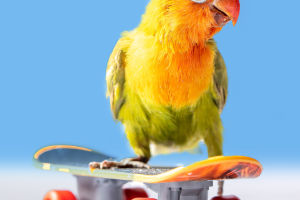When it comes to people's beloved feline and canine companions, their belly buttons often remain shrouded in mystery.
While human belly buttons are conspicuous reminders of our umbilical connections, the presence and location of these enigmatic features in cats and dogs are less known. Delving into the hidden world beneath their furry coats, we explore where belly buttons can be found in these charming creatures.
The Concept of Belly Buttons:
Belly buttons, scientifically referred to as umbilici or umbilical scars, are remnants of the umbilical cord that nourished and connected animals to their mothers in the womb. Although cats and dogs possess belly buttons, they are not as easily discernible as in humans.
Feline Belly Buttons:
In cats, the belly button is discreetly located on the midline of the abdomen. While the exact position may vary slightly depending on the individual cat, it typically lies approximately 1 to 2 inches below the ribcage.
Feline belly buttons are small and often appear as a thin, vertical scar or indentation. Due to the dense fur covering their bellies, it can be challenging to spot a cat's belly button without a closer examination.
Canine Belly Buttons:
Similarly, dogs also possess belly buttons, albeit in different locations. A dog's belly button is found along the midline of the abdomen, generally situated closer to the hind legs. The exact position can vary based on factors such as breed and size, but it typically falls around the lower third of the abdomen.
While the appearance of a canine belly button may differ from that of a cat, it usually appears as a small, circular scar or a slightly raised nodule.
The Significance of Belly Buttons:
Although belly buttons in cats and dogs hold no practical function once they are born, they serve as a testament to their past connection with their mothers. These innocuous features remind us of the vital role the umbilical cord played in their early development.
Intricacies of the Umbilical Cord:
Understanding the location of belly buttons necessitates knowledge of the umbilical cord's anatomy. During pregnancy, the umbilical cord attaches to the placenta, enabling the transfer of nutrients and oxygen from the mother to the developing fetus. After birth, the cord is severed, leaving behind a scar or nodule that becomes the belly button.
Appearance Variations:
While the general descriptions provided for feline and canine belly buttons are common, variations exist. The color, shape, and size of these umbilical scars may vary among individuals and can be influenced by factors such as genetics, birth circumstances, and the healing process.
Importance of Belly Button Awareness:
Although understanding the precise location of a cat or dog's belly button may seem trivial, it can be essential for pet owners and veterinarians. Awareness of the belly button's location can assist in identifying potential health concerns, such as hernias or infections in the umbilical region. Additionally, it can serve as a reference point during medical procedures, should the need arise.
While the belly buttons of cats and dogs may not be as prominently displayed as ours, they exist as silent reminders of their early connection to their mothers. Found along the midline of their abdomens, these small scars or indentations mark the spot where the umbilical cord once sustained their lives.
Acknowledging the presence and location of belly buttons in our furry companions provides a deeper appreciation for the intricate journeys they embark upon from birth to adulthood.


